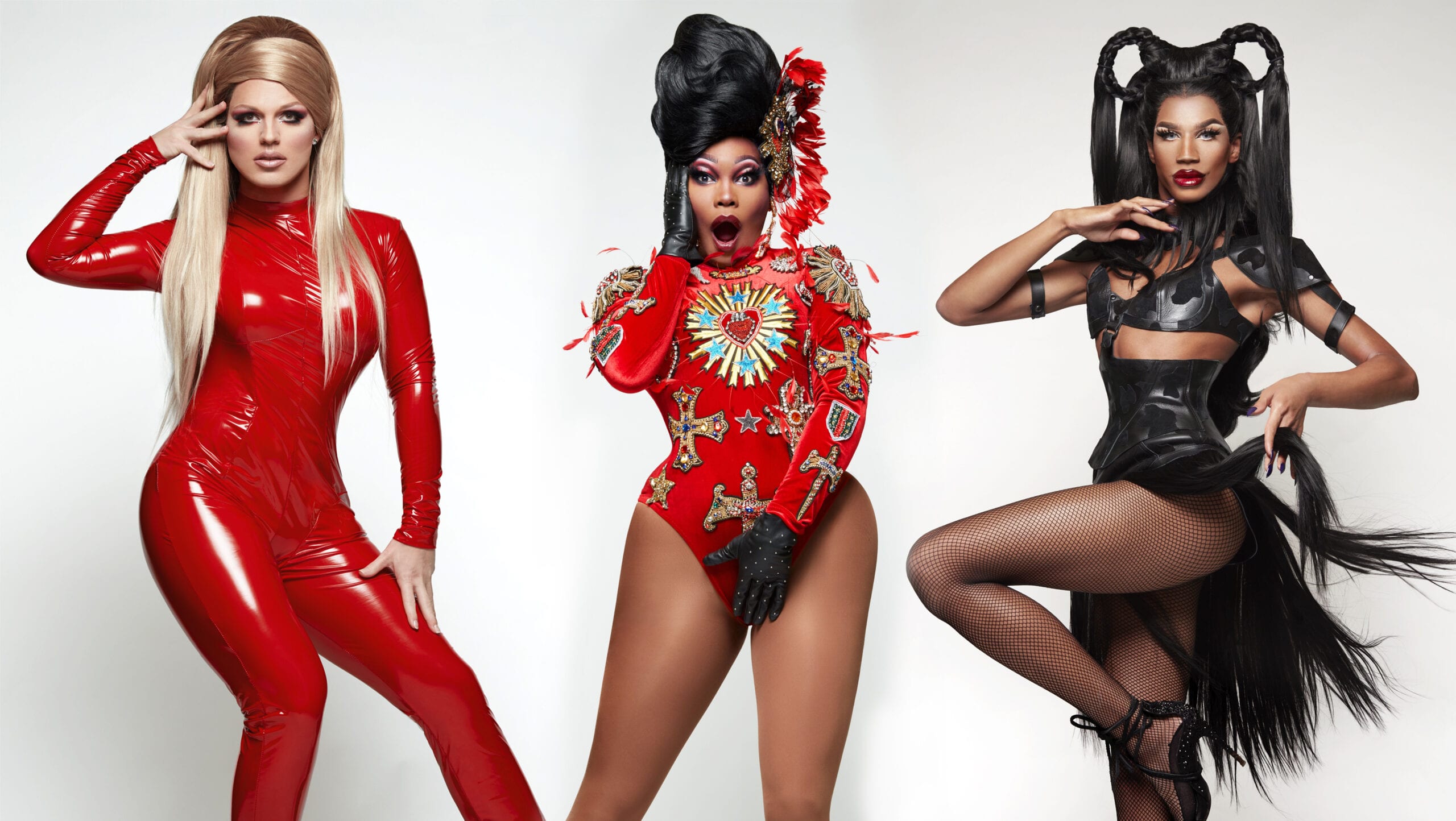The finale of RuPaul’s Drag Race: Vegas Revue mostly plays out like any other episode: The queens try to tackle their interpersonal drama, there’s some romantic tension and we get a full performance from one of the queens.
Then COVID-19 hits, and instantly the show morphs into another kind of series entirely—full of at-home check-ins with the dolls and a concluding Zoom call that acts as a reunion of sorts. Much like how the pandemic hit the world, Vegas Revue slams to a halt.
Some reality TV—Love Island, American Idol, Big Brother—has directly addressed the pandemic as a production challenge. But other coronavirus-era reality programming, be it a Real Housewives series, Selling Sunset or, yes, the many seasons of Drag Race we’ve seen in 2020 (all filmed before March) feels like it’s from a reality separate from ours—one in which the global pandemic feels more like a work of fiction than an ongoing reality.
Because its first episode previewed the looming threat of Las Vegas being shut down due to COVID-19, RuPaul’s Drag Race: Vegas Revue has always felt much more starkly like the last gasp of a thriving entertainment scene. It’s a show filmed before a disaster, one which none of its participants are aware of as we watch them squabble over backstage beef, make plans for relationships and weddings and invest heavily in a Las Vegas show that is now shuttered until at least January 2021.
It’s a shame that the Vegas Revue experiment had to come to an early end, because it was a promising take on what another kind of Drag Race series could look like. Infusing a distinctly Bravo energy into a group of queens we already know from other shows gave them all more dimension as characters, and proved entertaining on a storytelling level. But while I hope Drag Race tries this format again someday, I’m ultimately more interested in what the show became than what it could have been. In showing us this particular slice of life right before the pandemic struck, it serves as a peek back at the pre-coronavirus era. It’s an artifact of that very specific time, which makes it all the more compelling.
RuPaul’s Drag Race: Vegas Revue has just enough storylines to keep things interesting, but not so many as to be overwhelming in six episodes. You have Derrick Barry and Naomi Smalls’ professional tension, spilling over from Season 8 of the main show. You have Asia O’Hara becoming something of a group pariah, thanks to a conflict over the perfectionist energy she brings to her dressing room. You have Kameron Michaels’ love life, both with a guy who lives in New York (a story that led to her being dumped at the top of Vegas’ Eiffel Tower) and with castmate Vanessa Vanjie Mateo. The latter provided some of the most heart of the season, as Vanjie opened up about her desire for a real relationship after things didn’t work out with Season 11 sister (and Canada’s Drag Race judge) Brooke Lynn Hytes.
Despite only having half a dozen episodes for these storylines, they all got significant focus, showed new sides of the queens and never overstayed their welcome. More to the point, they allowed the queens to interact in ways we don’t see on Drag Race, in conflicts that are both personal and professional—and distinctly not competitive.
The only story that didn’t really work was Yvie Oddly’s attempts to explore professionally. You can tell Yvie didn’t really have time to mesh with the group, because in most episodes she was off on her own, doing something unrelated to everything else. Hers is the storyline that likely needed more time to flesh out, but it’s just one blip in what was otherwise a successful series.
But the biggest storyline of the series actually doesn’t come to a natural end, as Asia and Derrick remain upset with each other over Asia moving dressing rooms (thanks to Derrick’s instigation of drama between Asia and Naomi). On the Zoom call that ends the series, Derrick apologizes while Asia accepts it and agrees to move on as her friend and sister. “People are dying,” Asia notes—the time for petty backstage drama of a show they only got to do for six weeks is long behind them. It’s a nice moment, but one wonders how the story would’ve played out in a COVID-19-free world.
“I’ve long been of the mind that Drag Race needs to invest in spinoffs that aren’t just variations of the same competitive format.”
I’ve long been of the mind that Drag Race needs to invest in spinoffs that aren’t just variations of the same competitive format. One of my biggest suggestions was mini-episodes with former winners, All Stars, and fan favourites in which the best of a particular element of drag—fashion, comedy, acting, makeup—get a one episode-only chance to exhibit their skills. Make it a charity competition, giving the winner’s chosen charity $20,000. I still want to see something like this, but Vegas Revue makes the argument for more spinoff series that bust out of the competition format entirely.
I’d love to see a show about the behind-the-scenes antics of a Werq the World Tour, for instance. WOW Presents Plus has a show like that, but it’s more of a docu-series than a reality show like Vegas Revue. I’d love a Real World-type series with eight queens living in a house together. Hell, give me Drag Race: Big Brother, and have the queens play a different game entirely. There are ways to expand this franchise beyond just more regional versions of Drag Race. I’m sure VH1 would jump at the chance for more in this brand.
For what it was, though, Vegas Revue stood out for being an experiment that came at just the right time. I’m sure some will be bummed by the somewhat anticlimactic ending, but there’s only so much the show could do about that. All it does for me is make me wistful for a time not that long gone—and hopeful that we might see such a time once again.


 Why you can trust Xtra
Why you can trust Xtra


